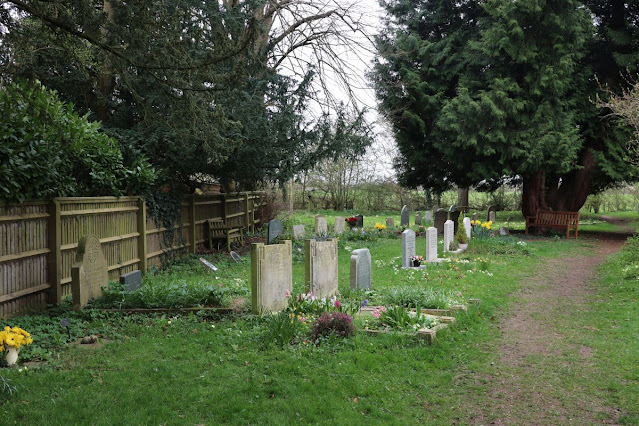This is not the first time I have been to this church, I visited briefly during lock down but intended to return for a more in depth visit. You will find some history off Wikipedia below the photo
"The Church of England parish church of Saint Nicholas dates from the late 12th or early 13th century. The nave was built in about AD 1210, with a porch in the middle of the south side. Relatively narrow three-bay north and south aisles were added in about 1230, with the south aisle absorbing the original porch and taking the porch's south wall for the limit of its width. The north aisle has one Norman and Early English Gothic 13th-century lancet windows, one of which has a later rere-arch with cusped spandrels, each with a carved rosette.
The chancel has two 13th-century lancet windows in its north wall. Near the westerly of these windows is a rectangular recess that may have been a squint. In its south wall are another lancet window and a 13th-century doorway. The Decorated Gothic east window is 14th-century and has reticulated tracery with ogees. The south wall of the chancel has at its east end a window from about 1350 that is said to have been brought from elsewhere, and towards the west end a 15th-century window with a depressed head. Some of the stained glass windows are 20th-century work by Ninian Comper.
The bell tower is substantially Norman but the upper stages were remodelled in the 14th century. The tower has a saddleback roof.
In the nave some of the seats are 16th-century and there is a west gallery fronted with 17th-century panelling. The pulpit and its tester are also 17th-century.
Restoration work was carried out on the building in 1856, 1875 and 1907. The large stone monument to the first Thomas Tipping used to be in the north aisle, but in 1906 was moved to its present position in the chancel. St. Nicholas' is a Grade I listed building.
The west tower has three bells. The treble was cast in about 1599, possibly by George Appowell of Buckingham. Ellis I Knight of Reading, Berkshire cast the tenor in 1623. George Chandler of Drayton Parslow cast the youngest of the main bells in 1716. There is also a Sanctus bell, cast by William Taylor's Oxford foundry in 1847.
The Puritan minister Calybute Downing held the living of the parish from 1632 but it was then conferred on Gilbert Sheldon in 1636. Sheldon already held the living of Hackney, received that of Oddington, Oxfordshire at about the same time as Ickford, and at some time also that of Newington, Oxfordshire. After the Restoration of the Monarchy, Sheldon was consecrated Archbishop of Canterbury in 1663. St. Nicholas' is now part of the Benefice of Worminghall with Ickford, Oakley and Shabbington."
Date of birth given on Service Record was 03/07/1922. Deliberately gave wrong date in the hopes of joining the RAF earlier than was allowed.
Was enlisted on 07/10/1940.
First flight was in a Tiger Moth on 12/07/1941.
Joined 602 Squadron 27/05/1943.
Left 602 Squadron 29/12/1944 after 547 hours and 15 minutes of flying.
Joined 57 O.T.U. Boulmer 05/01/1945
Looking west
From further back the churchyard on the north side looking west























7 comments:
A marvelous church.
You're lucky to be able to obtain so many views of the church; often I struggle to find one decent viewpoint among the yew trees. "Calybute Downing" - now there's a fine name!
It has lasted a long time! I'll miss the linkup. Building one takes effort because other forms of social media are taking attention away from blogs. There are a few that are still growing but the managers spend time reminding people to post again.
It is a beautiful looking church I hopw to return to
Yes I find most places I vist give some good views. I had to look up to see who "Calybute Downing" was,quite a fellow it seems
You may well be able to link up I have been asked to reconsider so will let you know in dues course
Too bad the timeframe for when the church would be open and your own didn’t work this time, but perhaps on a future visit you can enter. Old cemeteries always fascinate me and the ones within a churchyard are most interesting as you have shown here.
Post a Comment